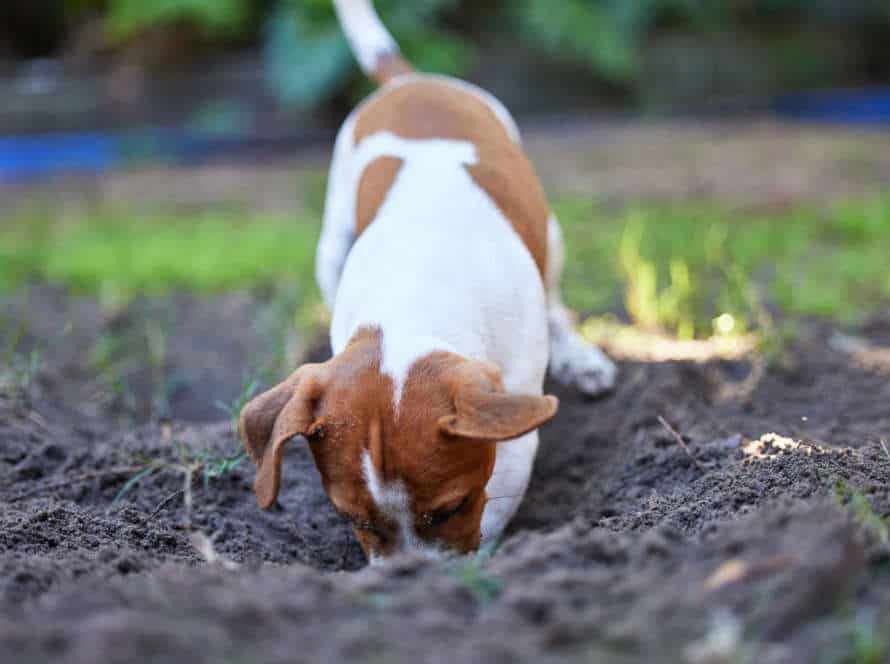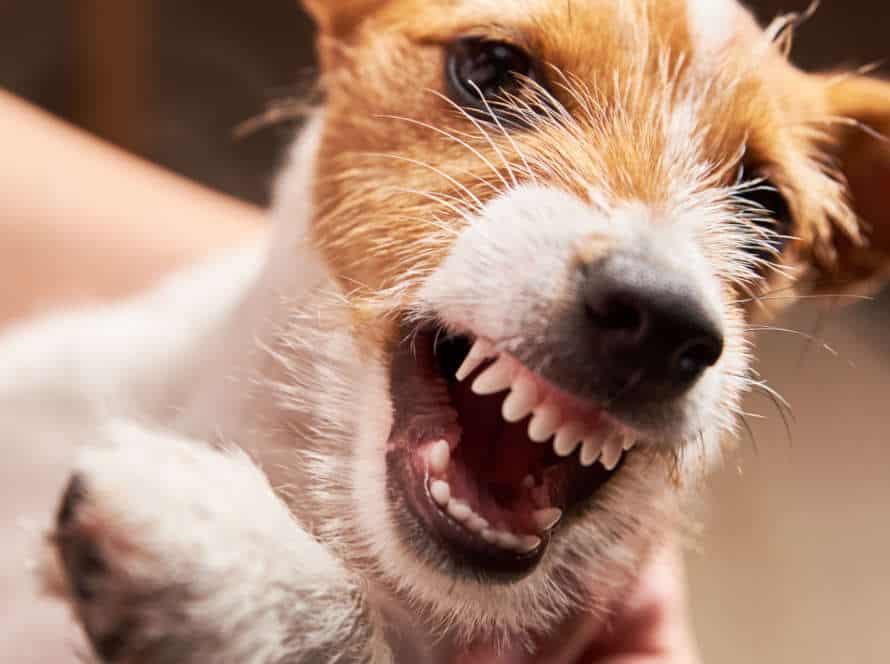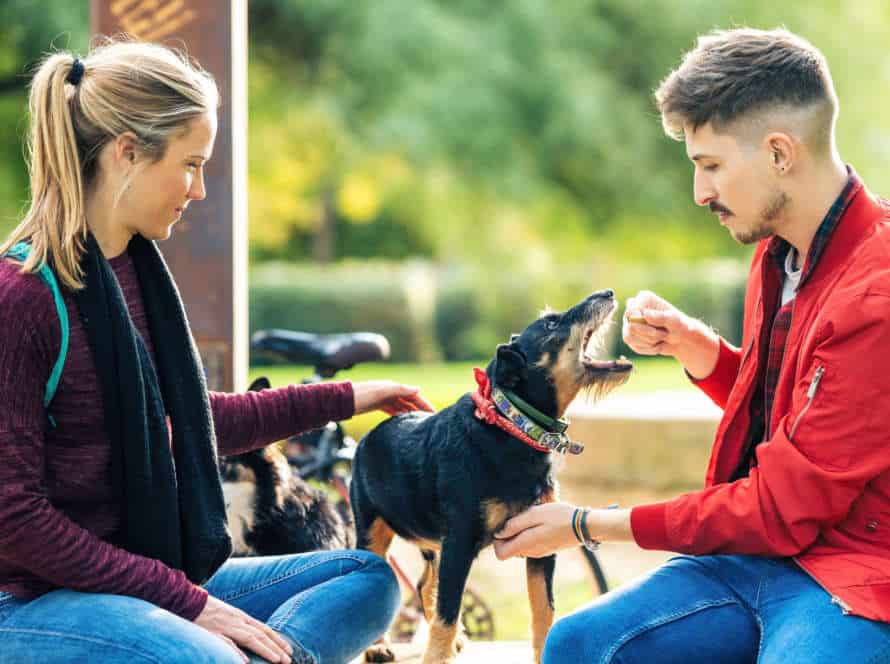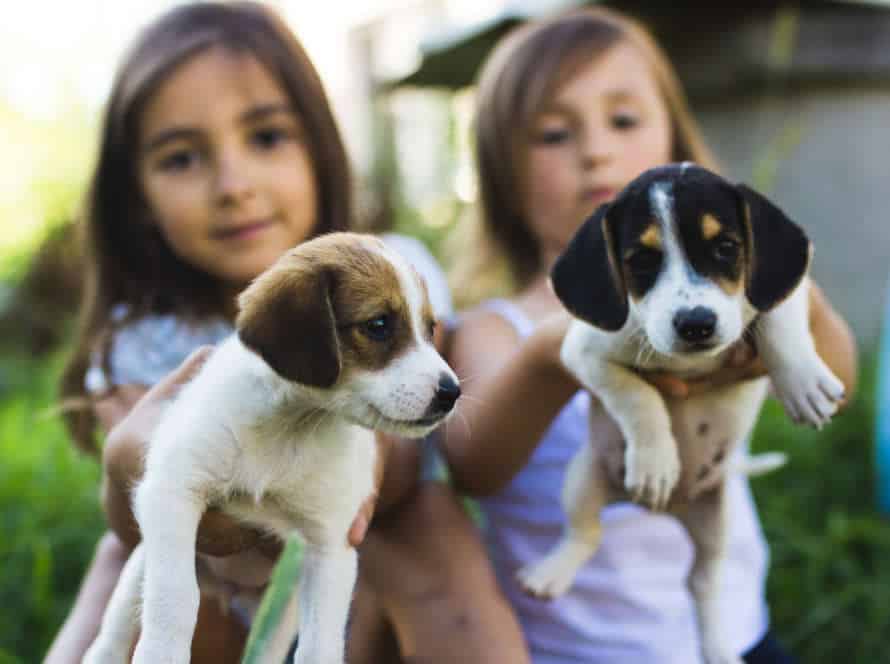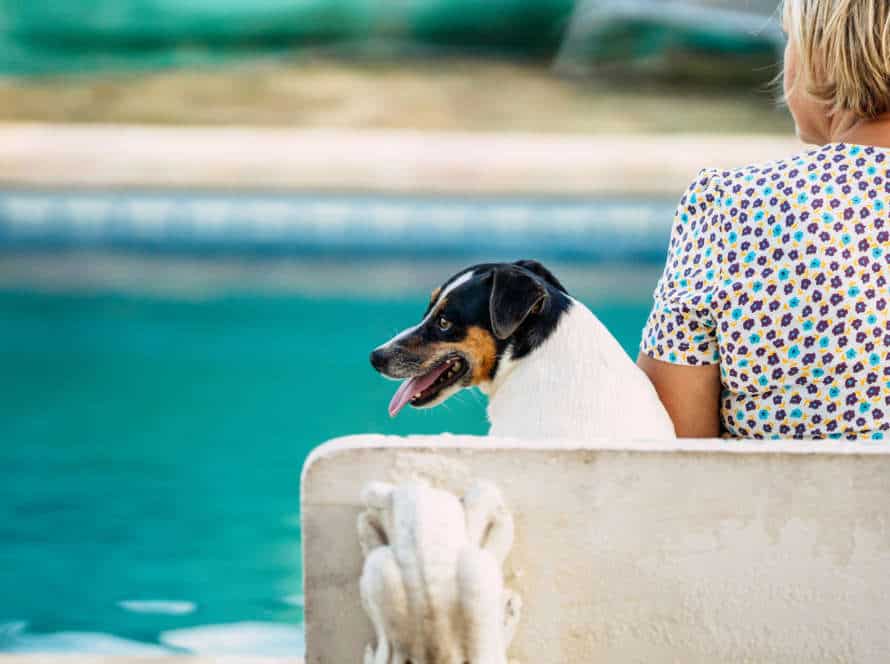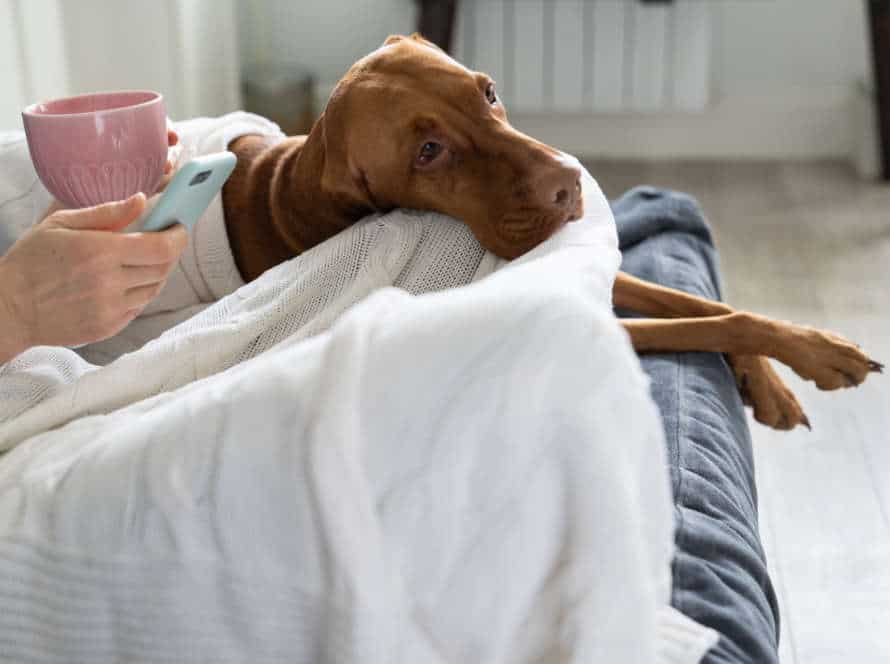Tips for Managing Jumping Behavior in Large Dogs
Big dogs can be intimidating and dangerous when they jump. To manage this, train and reward them consistently. Here are some tips:
- Teach alternative actions – like ‘sit’ or ‘stay’ instead of jumping.
- Everyone in the house should use the same rules.
- Don’t reward jumping – ignore or re-direct it instead.
- Exercise and play with them – this reduces boredom and stops them from jumping.
- Seek professional help if needed.
Pro tip: Time and patience is the key – reinforce good behavior with rewards.
Understanding Why Dogs Jump
Owners of big pooches may not understand why their beloved furry friends like to jump. But, it’s a usual thing for canines! Yet, this jumping can be troublesome and bothersome. To better control this action in large dogs, it’s critical to know why they do it and what motivates them. Let’s explore this regular behavior.
Reinforcement of jumping behavior
Jumping is a normal thing for pups. It’s their way of saying “Hi!” and asking for affection. But when big doggos jump, it can be a problem, as they might knock people down. Here are some tips for managing jumping in large dogs:
- Ignore the jumping; even negative attention can reinforce the behavior.
- Teach them the “Off” command. Use a leash to stop the dog and then step away while saying “Off”. Only give rewards and praise when the dog stays on all four paws.
- Use positive reinforcement training to learn another action instead of jumping, like “Sit” or “Stay”.
- Make sure your pup gets regular exercise and mental activity to keep their energy levels in check.
- Be consistent and patient with training, and always reward good behavior.
Seeking attention
Jumping in dogs? Attention-seeking! It’s their way of interacting with humans. Here are tips to manage it in big dogs:
- Don’t reward jumping with attention. Wait for calmness before petting them.
- Teach ‘sit,’ ‘stay,’ and ‘down.’ Reward for following.
- Give a designated spot for jumping – like a mat or cushion.
- Socialize your dog – expose to different people and environments.
- Patience and consistency is key for training.
Excitement and playfulness
Excitement and playfulness are why dogs jump. But, it can become a problem if not managed properly.
Here are tips for large dogs:
- Ignore the jumping. No eye contact, petting or pushing away.
- Teach the ‘Off’ command. Your pup must keep paws on the ground when someone enters the room.
- Use a leash. Have controlled greetings with people, and reward when your dog stays calm.
- Exercise and mental stimulation. Burn off extra energy, and stay calm.
- Get professional help. If the problem persists, find a trainer or behaviorist.
With patience, consistency, and training, you can manage your pup’s jumping. Avoid any unwanted jumping from your lively pet.
Establishing Rules and Boundaries
Jumping can be an issue with large dogs. To keep your pup and those around them safe, rules and boundaries must be set. We'll discuss strategies to achieve this success. Establishing clear-cut regulations is key in controlling undesirable behavior.
Consistency in training
Consistency in training is key to managing jumping behavior in large dogs effectively. Establish rules and boundaries to help them tell the difference between good and bad behavior. Here are some tips:
- Ignore the jumping, reward calmness. Ensure that everyone in the household follows this.
- Teach your dog to go to a spot when a guest arrives.
- Use treats, toys and praise to improve behavior, discourage jumping.
- Train your dog to sit and stay, reward them for following directions.
By being consistent and following these tips, pet owners can manage their large dogs’ jumping behavior, and build a great relationship.
Teaching basic commands
Train your large dog with basic commands like ‘sit’, ‘stay’, and ‘come’.
Reinforce good behavior with treats and compliments.
Reward good behavior right away.
Reprimand unwanted behavior without aggression.
Keep training short and regular. This will help your pup understand what is expected of them.
Ultimately, your dog will associate good behavior with rewards, and bad behavior with negative reinforcement.
Creating a calm, structured environment
Rules & boundaries are key to managing jumping in big dogs & creating a calm atmosphere. Here are some tips:
- Teach basic commands, like sit, stay, down & come when called.
- Use positive methods to reward good behavior & discourage jumping.
- Set clear rules & boundaries for when & where jumping is allowed.
- Be consistent & don’t send mixed messages.
- Give your dog lots of exercise & mental stimulation to reduce jumping impulses.
Remember, jumping can be a sign of excitement or anxiety, so it’s important to address the root cause & give your dog a secure environment.
Positive Reinforcement Techniques
Positive reinforcement is a popular way of controlling excessive jumping in big dogs. Instead of punishing them for bad behavior, this technique rewards desired behavior. It’s proven to work in both home and professional settings. You can reduce jumping by giving your pup the right rewards when they do what you want.
Using treats and rewards to incentivize good behavior
Treats and rewards are a great way to encourage good behavior in larger, jumping dogs. Here are a few tips to help manage jumping:
- Treats: Give your pup a treat when they do something good, like sitting quietly. Do this regularly and make it so they need longer good behavior for the treat.
- Toys: Praise and reward them when they choose to play with their toys instead of jumping on people. This teaches them that playing with toys can be rewarding.
- Positive attention: Dogs love getting positive attention from their owners. When they don’t jump, give them some affection – belly rubs, ear scratches, or a gentle pat.
Consistency is key when training your pup. Doing these techniques regularly will encourage good behavior and help manage jumping, while strengthening your bond.
Clicker training for redirection
Clicker training is a great way to redirect and control large dogs jumping. Here’s how to do it:
- Grab a clicker and treats.
- Wait for your pup to come up and start jumping.
- As soon as their front paws touch the ground, click the clicker and give them a treat.
- Keep repeating this each time they jump, clicking and giving a treat when they have their paws back on the ground.
- With consistent training, they’ll learn that jumping isn’t rewarded. Instead, they’ll focus on keeping all paws on the ground.
- This technique can also be used to divert their attention to better behaviors like sitting or laying down.
- Remember to stay patient with the training process. It could take some time for your dog to understand and learn the new behavior.
Avoiding negative reinforcement or punishment
Negative reinforcement or punishment should be avoided when managing jumping behavior in large dogs. Instead, use positive reinforcement techniques to reward desired behaviors and discourage jumping. Here are a few tips on how to do that:
- Teach basic obedience commands, like “sit” and “stay”, to distract your pooch and stop them from jumping.
- Offer treats, praise, or play when your dog is calm and relaxed.
- Ignore their jumping and don’t make eye contact until they settle down.
- Be consistent with training and reinforce the good behavior each time it happens.
Positive reinforcement techniques are the most effective way to manage jumping behavior in large dogs, without having to resort to negative reinforcement or punishment. Pro tip – Dogs respond best to consistent and positive reinforcement – training should be an enjoyable experience for both the pooch and their owner!
Curbing Jumping Behavior During Greetings
Large dogs can be tricky to manage when they jump on people. Why do they do it? Maybe they’re seeking attention?
Let’s look at tips to stop them jumping up. Some experts say it’s an attention-seeking thing. So, how do we stop it? Here are some ideas:
Teaching the “sit” command
Training your pup the “sit” command is great to stop jumping and control your big dog’s enthusiasm when they meet someone. Here are some tips:
- Begin with basic obedience training, using positive reinforcement.
- Say the word “sit” firmly and use a hand gesture.
- Give a treat or say something nice when your dog sits.
- Practice the “sit” command in various places, adding distractions slowly.
- Say the “sit” command when your pooch gets too energetic or jumpy.
- When your dog has mastered the “sit” command, use it to manage their behavior and make a relaxed atmosphere for everyone.
Training dogs to wait for permission to greet
Teach your large pup to wait for your go-ahead before leaping. Here’s how:
- Train essential commands like “sit” and “stay”.
- Reward good behavior with treats and praise.
- Be consistent with enforcing the waiting rule.
- Speak firmly but kindly to your pup.
- Exercise and mentally stimulate your pup.
- If jumping continues, tether your pup or confine them when guests come over.
- Be patient. With enough dedication, your pup can learn good manners!
Ignoring bad behavior and rewarding good behavior
Ignoring bad behavior and rewarding the good is the top way to make dogs stop jumping during greetings. Here are some tips for managing big dogs:
- Turn away from them, no eye contact, until they relax.
- When their paws are on the ground, give treats or compliments.
- Keep them leashed during greetings, and teach them alternative moves, like sitting or lying down, instead of jumping.
- Also, make sure everyone does the same thing to control the jumping.
Positive reinforcement and staying consistent is the key to managing dogs jumping.
Minimizing Jumping Behavior in Public Spaces
Large dogs’ jumping can be unsafe for them and other people in public. We must reduce or stop this behavior. Here are some tips for managing large dogs’ jumping in public:
Keeping dogs on a leash or harness
Keep your pooch on a leash or harness to control their jumping in public. Here are some tips:
- Use a harness. It reduces neck injury risk and gives more control.
- Train ’em. Teach “sit” and “stay” and reward good behavior. Consistency is key!
- Keep ’em on a short leash. Better control and less jumping on strangers or other dogs.
- Distract ’em. Treats, toys, or other distractions help focus on something else.
Remember, it’s natural for dogs to jump, but it’s your job to manage it. Consistently use these tips and happy walks with your pup will follow!
Consistent training in various environments
Training in various places is key to reducing jumping in public, especially with larger dogs. Here are some tips:
- Start at home: Teach them to sit or stay when asked, reward good behavior, and discourage bad.
- Positive reinforcement: Works better than punishment, and encourages good behavior.
- Train in different environments: To help dogs understand how to act in each place.
- Keep distractions low: To help your dog focus on the task when in public.
- Socialize your pup: To make them feel more secure and reduce anxiety and jumping.
Consistent training in different spots will help your dog learn how to act in public.
Using barriers and deterrents in public settings.
Using barriers & deterrents in public settings can be a great way to manage large dogs’ jumping behavior. Here are some tips:
- Barriers: Use physical barriers, like baby gates or playpens, to create a safe space for the pup and stop them from jumping on strangers.
- Deterrents: Sprays, noisemakers, and vibration collars can help discourage jumping. Plus, verbal cues and positive reinforcement training can help redirect their attention.
- Leash & Harness: These provide better control and help resist jumping in public.
- Consistency: Be consistent with training & corrections to reinforce good behavior and reduce jumping.
These techniques protect people & ensure the pup’s safety.
Pro tip: Socializing your dog early can help prevent jumping in adulthood.
Frequently Asked Questions
Q: Why do large dogs jump up on people?
A: Large dogs jump up on people as a way to greet them or show excitement, but it can also be a sign of dominance or a behavior that they have learned from their owners.
Q: What are some tips for managing jumping behavior in large dogs?
A: Some tips include teaching your dog a “sit” command, ignoring them when they jump, using positive reinforcement, providing plenty of exercise and mental stimulation, and seeking help from a professional trainer.
Q: Can jumping behavior in large dogs be dangerous?
A: Jumping behavior can be dangerous to small children and elderly people, as well as to individuals with physical disabilities or balance issues. It can also cause accidental injury to the dog or damage to property.
Q: How long does it take to train a large dog to stop jumping?
A: The amount of time it takes to train a dog to stop jumping depends on the dog’s age, temperament, and previous training. It can take a few weeks to several months, and consistency and patience are key.
Q: Are there any collars or equipment that can help manage jumping behavior in large dogs?
A: There are a range of collars and training aids on the market, but it is important to choose tools that are humane and not likely to cause harm to the dog or promote fear or aggression.
Q: What should I do if my large dog continues to jump even after training?
A: If your dog continues to jump despite your efforts to train them, it may be helpful to consult with a professional trainer or behaviorist who can assess the situation and provide tailored advice and guidance.


